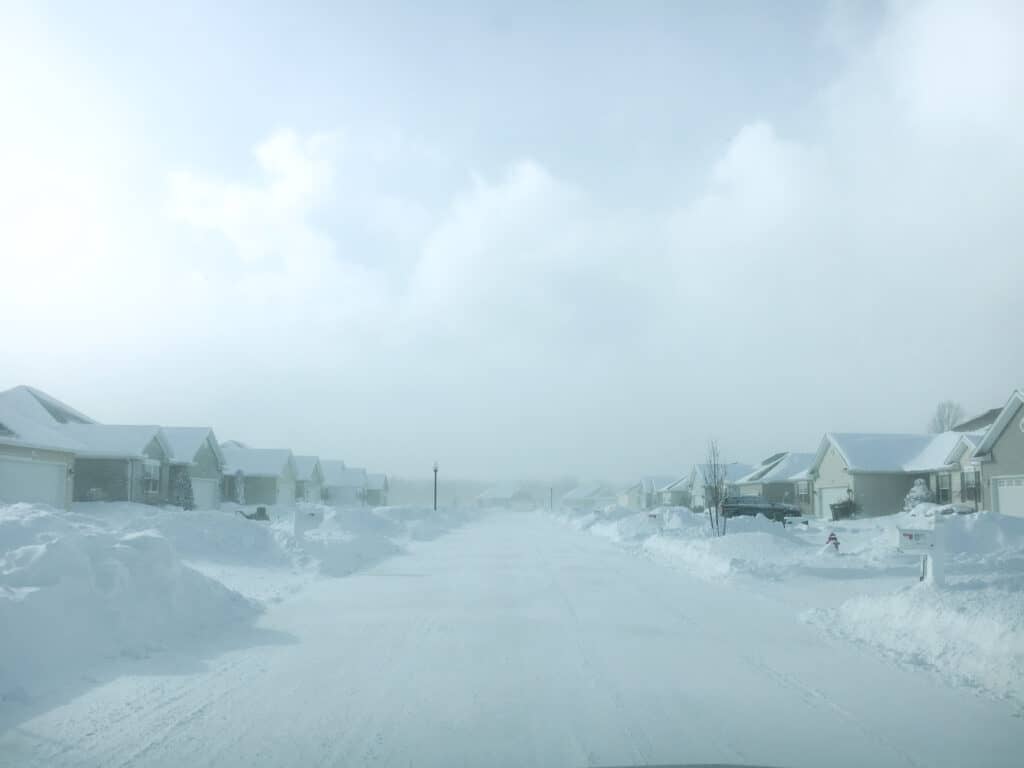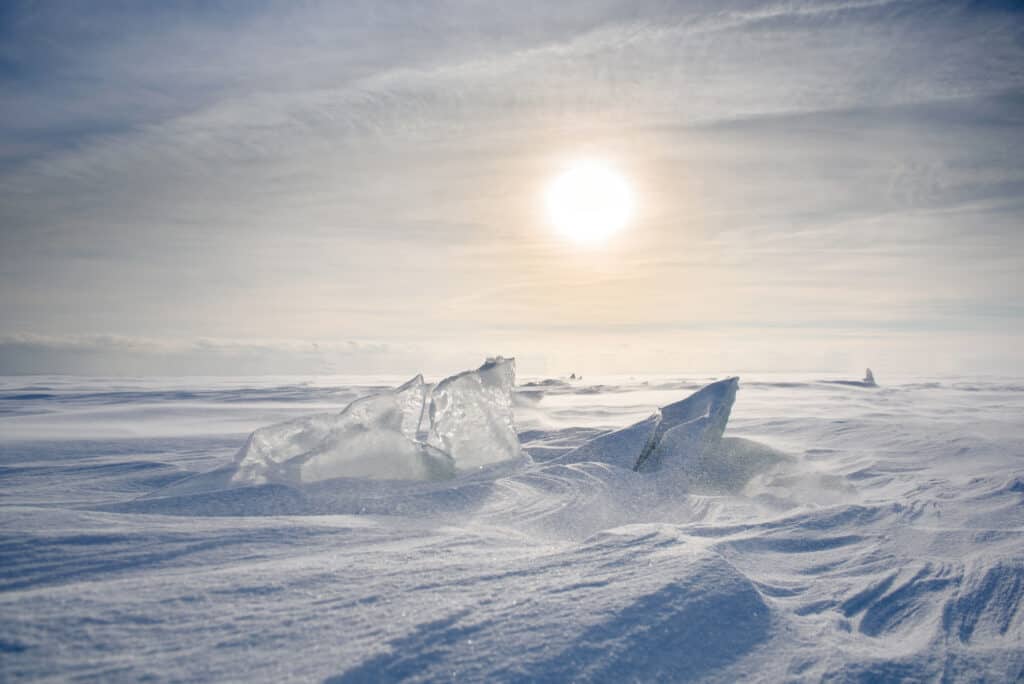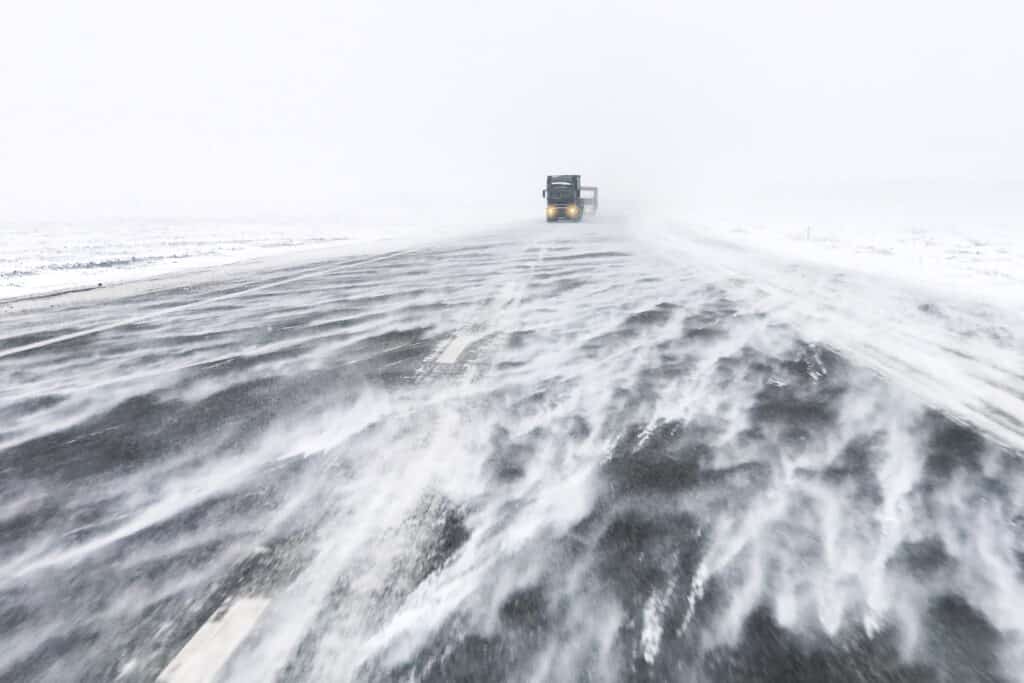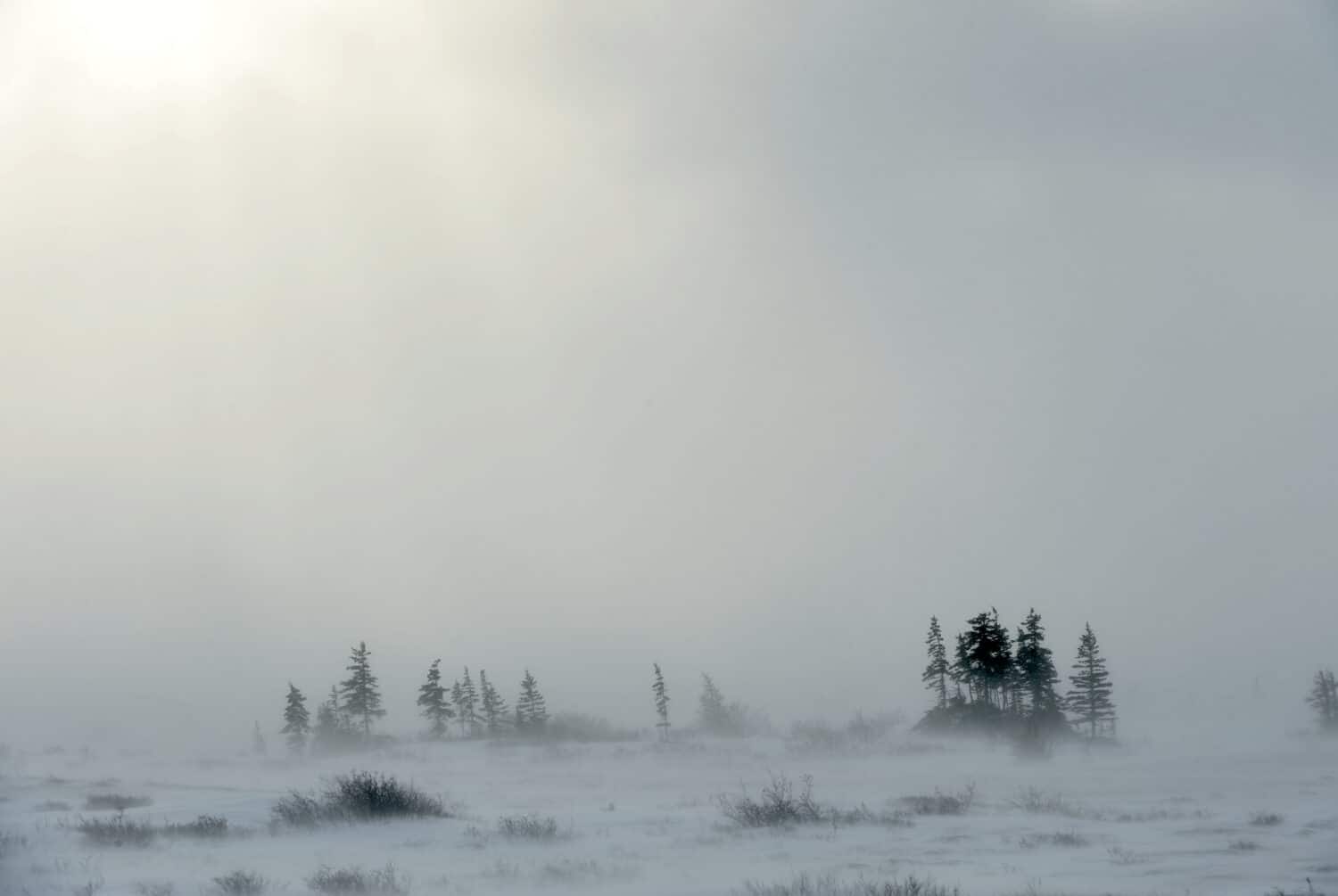There’s no bigger sign of the seasons changing than the weather cooling down and the leaves changing color. You start to drink hot chocolate and get the fires ready. Winters in England are usually filled with rain and clouds. It typically only snows around 14 days of the year in London, with it being especially rare in November. It only snows an average of 30 inches in throughout the year in England. Unfortunately, there are some instances where the cold and snowy weather gets extreme. This was the case in 1890, which is when the worst November snowstorm in England took place.
What Happened During the November Snowstorm of 1890?

In the town of Ipswich, there was a total of just under 16 inches of snow that fell.
©eyerazor/Shutterstock.com
The first bulk of November was normal and relatively uninteresting. On the 25th, that all changed when a massive storm hit England. Kent and Surrey had up to ten inches of snowfall on them during this storm. In the town of Ipswich, there was a total of just under 16 inches of snow that fell. The temperatures fell to zero degrees Fahrenheit. This horrible storm continued into December and the rest of the winter.
What’s worse is the citizens couldn’t have truly predicted this storm thanks to the fact that the weather leading up was the same as any other November. England also is built to withstand rain much more than it’s built to withstand snow. Thankfully, almost everyone was safe during this storm in England. However, at the end of this snow season, there was a storm in March that killed more than 200 people and 6000 animals because of the cold and being trapped. Even today, snow across the country is rare. Just how rare is snow around the bulk of England in November?
How Often Does It Snow All Across England in November?

The storm of 1993 led to almost two feet of snow in different parts of the country like Rotherham, Peak District, and Leeds.
©river34/Shutterstock.com
The last time it snowed across the majority of England happened was in 2010. It’s been 13 years since this happened, and before that, it took place in 1993. These storms are typically soft but lead to more intense storms in December. The storm of 1993 led to almost two feet of snow in different parts of the country like Rotherham, Peak District, and Leeds. There were 17 years between November snowstorms in England, so it’s unsure when the next major storm around the country will take place. Since snow in November in England is rare, what weather events typically happen?
What Weather Usually Happens in November in England?

You also need to try and soak up as much sun as possible before November rolls around.
Weather in England is typically met by cooler temperatures, rain, and frost. The combination of the cool temperatures and rain makes areas icy. You’ll need to make sure you stay aware whenever you’re driving on the roads of England in November. In the southern part of the country, where cities like London are, it’s even more rare to see snow in November. You also need to try and soak up as much sun as possible before November rolls around. On average, there are only 70 hours of sunshine in November. That equates to a little more than two hours of sun per day, which drops to an even lower amount in December.
What Was the Worst Snowstorm in the History of England?

The army of England was called in just to clear the roads.
©Vitaliy Kaplin/Shutterstock.com
The worst snowstorm in November in England barely compares to the worst snowstorm overall in England. In 1947, there was a period between January and March so powerful that the government had to fly in supplies. The army of England was called in just to clear the roads. There were parts of England where the snow was almost 23 feet deep. Houses were destroyed because the roofs couldn’t hold the weight of all the snow on top of them. The temperature was below freezing almost every day of this storm.
Because of the freezing temperatures, the snow didn’t go anywhere until it was manually cleared out. The storm also took away the sunshine that the country is so desperate for during this time of the year. Even after all the snow had melted and cleared out, the issue of flooding started to show itself. The rivers in Nottingham forced some residents to escape and flee their homes, even though they were washed away. At the end of spring, the flooding was finally over and the residents could start to rebuild their homes and get their lives back on track.
Thank you for reading! Have some feedback for us? Contact the AZ Animals editorial team.








